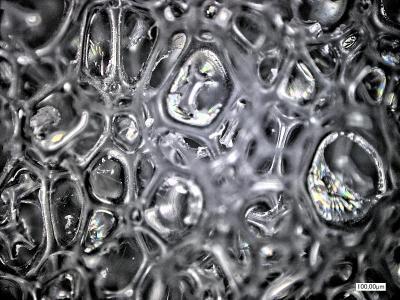Synthetic materials made from organic polymers, like polyurethane foams, usually burn very well due to their high carbon content. They not only burn easily; depending on their chemical composition they can produce toxic gases such as hydrogen cyanide or carbon monoxide.
Upholstered furniture and mattresses commonly use polyurethane foams so they have to be treated with flame retardants.
Conventional halogenated flame retardants such as tri(chloropropyl) phosphate (TCPP) and brominated flame retardants, such as polybrominated diphenyl ethers (PBDE), are now suspected of being harmful to health and the environment: a number of these substances are extremely persistent and accumulate in the environment, may have hormone-like effects and are even thought to be carcinogenic. In many instances they are not commonly used, companies like NEC, Samsung, Apple, Ikea, etc. do not use halogenated flame retardants any more.
Non-harmful replacements are in demand so Empa and FoamPartner researchers have pursued novel flame retardants that are organic phosphorus-containing compounds - phosphoramidates.

This image shows polyurethane foam under an optical microscope. The flame retardant has no effect on the structure of the foam. Credit: Empa
The Empa researchers synthesized several of these substances (which differ from each other in terms of the type of amine substituents attached to the phosphorus) and added them to the polyurethane foam in increasing concentrations. First results indicate that the flame retardants did not have a negative effect on the foam manufacturing process.
As a result, conventional agents that are harmful to health may soon be a thing of the past.
Upcoming in Industrial & Engineering Chemistry Research (no citation yet).




Comments